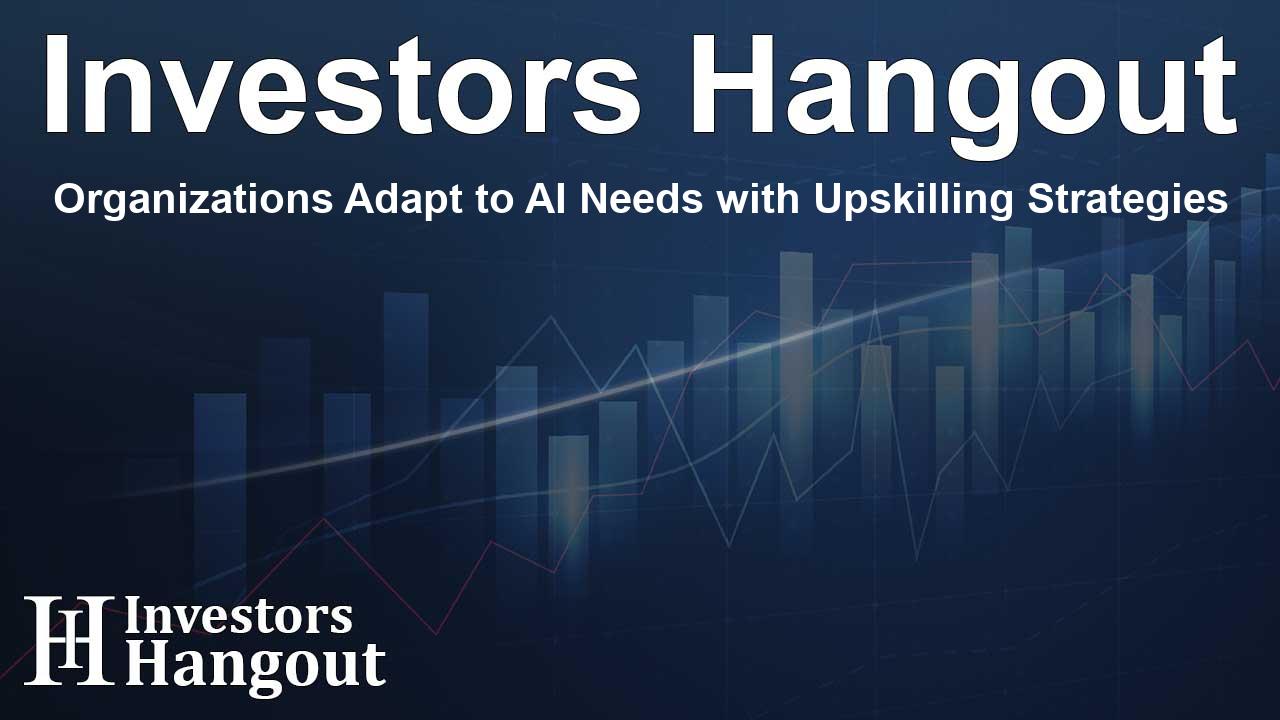Organizations Adapt to AI Needs with Upskilling Strategies

Embracing Change for AI-Driven Success
In today's fast-paced technological landscape, the role of artificial intelligence (AI) is becoming increasingly crucial for organizations striving to enhance their effectiveness. A recent study indicates that 94% of companies anticipate AI will significantly boost their operations. This shift has prompted many organizations to look at upskilling their workforce to meet the evolving job demands in the age of AI.
Understanding the Skills Gap
Despite optimistic projections, a gap in essential AI skills persists within the workforce. Surprisingly, fewer than half of all organizations possess the core competencies in AI necessary to adapt quickly and efficiently. This deficiency limits their potential to fully realize the benefits associated with AI technologies. Key findings of the report revealed critical challenges, including:
- 68% of organizations struggle with a lack of AI/ML skilled employees.
- 65% face staffing shortages in cybersecurity and compliance roles.
- 61% of companies have difficulties finding expertise in FinOps and cost optimization.
- 54% report a significant skills gap in cloud computing and platform engineering.
With more than 44% of organizations describing the shortage of skilled workers as a major barrier to technology adoption, the need for proactive measures has become evident.
Expanding AI-Related Roles
In response to the pressing challenges surrounding AI adoption, around half of the organizations surveyed indicated they are actively expanding their AI-specific workforce. Many are creating new roles aimed at harnessing AI capabilities, such as:
- AI/ML operations engineering leads (64% of respondents)
- AI product managers (36% of respondents)
Major industry leaders recognize that the transformation required to implement AI successfully hinges upon investing in training programs and giving employees practical experience that enhances their capabilities.
Upskilling: A Strategic Business Move
Upskilling is not merely a talent acquisition strategy — it has quickly emerged as a crucial aspect of business success. Organizations that prioritize training their existing workforce see immense benefits, such as:
- 72% of companies are now focusing on staff upskilling, a significant increase from previous years.
- Upskilling is statistically 62% faster than hiring new talent.
- Technical training programs yield a 91% improvement in employee retention.
- 71% of organizations recognize the value of certifications when recruiting to ensure competence.
This trend reflects a growing awareness that investing in employees is essential for remaining competitive in this rapidly changing landscape.
Open Source as a Catalyst for AI Engagement
Open source frameworks and tools play a pivotal role in facilitating AI adoption within organizations, with 40% of respondents indicating their reliance on open source methods to accelerate AI initiatives. Those incorporating open source approaches enjoy various benefits, including:
- Enhanced employee retention and skill development.
- A collaborative environment that drives innovation.
- A reported 84% improvement in retention linked to an open source culture.
Organizations that embrace open source practices find that it significantly fosters a collaborative culture, enhancing the overall quality and efficiency of AI development. As the landscape shifts, clear strategies that blend upskilling with open source methodologies are essential for robust performance.
Looking Ahead: Preparing for the Future
As we continue to explore the implications of AI integration in the workplace, it becomes clear that aligning skills development with technological advancements is necessary. Organizations that invest in their workforce and adapt their strategies to embrace the realities of AI can position themselves competitively in the years to come.
Frequently Asked Questions
What is the main finding of the Linux Foundation report?
The report highlights that 94% of organizations believe AI will significantly enhance operational effectiveness while emphasizing the need for upskilling to bridge the AI skills gap.
How are organizations addressing the skills gap in AI?
Many organizations are prioritizing upskilling existing staff and creating new AI-specific roles to equip their workforce for emerging technological demands.
What benefits does upskilling provide?
Upskilling is shown to be quicker than hiring, improves retention significantly, and positions organizations to better compete in a rapidly evolving tech landscape.
How does open source contribute to AI implementation?
Open source frameworks enable organizations to accelerate AI adoption and foster a collaborative culture that enhances retention and skill development among employees.
What are the trends in AI-related workforce roles?
Organizations are creating new roles focused on AI implementation, such as AI/ML operations leads and AI product managers, to meet the growing demand for AI expertise.
About The Author
Contact Owen Jenkins privately here. Or send an email with ATTN: Owen Jenkins as the subject to contact@investorshangout.com.
About Investors Hangout
Investors Hangout is a leading online stock forum for financial discussion and learning, offering a wide range of free tools and resources. It draws in traders of all levels, who exchange market knowledge, investigate trading tactics, and keep an eye on industry developments in real time. Featuring financial articles, stock message boards, quotes, charts, company profiles, and live news updates. Through cooperative learning and a wealth of informational resources, it helps users from novices creating their first portfolios to experts honing their techniques. Join Investors Hangout today: https://investorshangout.com/
The content of this article is based on factual, publicly available information and does not represent legal, financial, or investment advice. Investors Hangout does not offer financial advice, and the author is not a licensed financial advisor. Consult a qualified advisor before making any financial or investment decisions based on this article. This article should not be considered advice to purchase, sell, or hold any securities or other investments. If any of the material provided here is inaccurate, please contact us for corrections.
